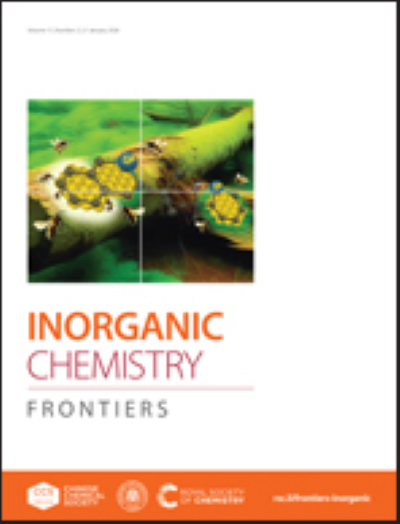Cu掺杂增强电催化硝酸还原制氨WO3中氧空位的结构优化
IF 6.4
1区 化学
Q1 CHEMISTRY, INORGANIC & NUCLEAR
引用次数: 0
摘要
电化学硝酸还原制氨不仅能去除废水中的有害硝酸盐污染物,还能生成有价氨。本文采用简单的水热法成功合成了纳米棒状Cu-WO3催化剂,具有优异的NO3RR性能。实验结果表明,与WO3样品相比,掺cu的WO3明显增加了氧空位的含量,从而提高了NO3RR的性能。结果表明,Cu-WO3在碱性电解液中,在- 0.6 V (vs. RHE)的最优电位下,NH3产率为2131.3 μg/h/mgcat,法拉第效率为94%。15N同位素标记试验确认了产生氨的来源。Cu-WO3还表现出良好的电化学循环稳定性和长期耐久性,具有工业应用前景。原位傅里叶红外(FTIR)光谱分析表明,Cu-WO3能有效吸附硝酸盐和二氧化氮中间体。这项工作为探索高效硝酸NO3RR电催化剂提供了有价值的见解。本文章由计算机程序翻译,如有差异,请以英文原文为准。
Structural optimization of oxygen vacancies in WO3 by Cu doping for enhanced electrocatalytic nitrate reduction to ammonia
Electrochemical nitrate reduction to ammonia can not only remove harmful nitrate pollutants from wastewater but also generate valuable ammonia. In this paper, a simple hydrothermal method was used to successfully synthesize the nanorod-shaped Cu-WO3 catalyst, demonstrating excellent NO3RR performance. Experimental results indicate that Cu-doped WO3 significantly increases the content of oxygen vacancies compared to the sample of WO3, resulting in improved NO3RR performance. As a result, Cu-WO3 exhibits high yield of NH3 is 2131.3 μg/h/mgcat and Faraday efficiency is 94% at optimum potential of −0.6 V (vs. RHE) in an alkaline electrolyte. 15N isotopic labeling tests confirm the origin of produced ammonia. Cu-WO3 also exhibits excellent electrochemical cycle stability and long-term durability, suggesting it possible application in industrial filed. In situ Fourier-transform infrared (FTIR) spectroscopy reveals that Cu-WO3 can effectively adsorb nitrate and nitrogen dioxide intermediates. This work provided valuable insights for the exploration of efficient nitrate NO3RR electrocatalysts.
求助全文
通过发布文献求助,成功后即可免费获取论文全文。
去求助
来源期刊

Inorganic Chemistry Frontiers
CHEMISTRY, INORGANIC & NUCLEAR-
CiteScore
10.40
自引率
7.10%
发文量
587
审稿时长
1.2 months
期刊介绍:
The international, high quality journal for interdisciplinary research between inorganic chemistry and related subjects
 求助内容:
求助内容: 应助结果提醒方式:
应助结果提醒方式:


